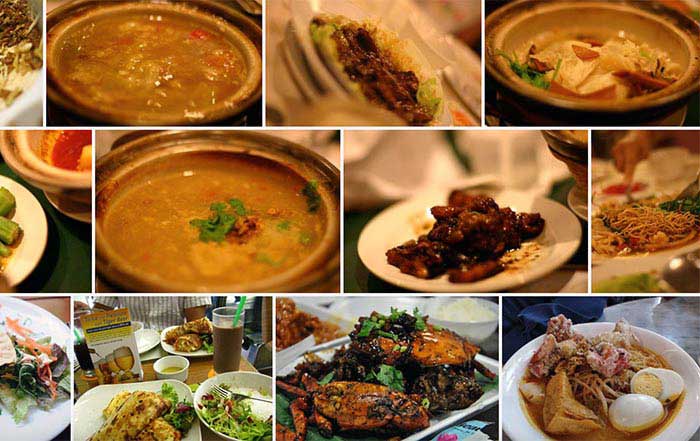Whereas it is a tiny country, Singapore has a plethora of culinary options. You can't go wrong with any of these street food treats. The first delicious meal is known as Frog porridge. It isn't a tourist trap, despite its unappealing moniker. It's one of the cleanest foods you'll ever eat. Soy sauce, spring onions, and wine are traditional marinades for frogs. Spicy chili and mild ginger are other popular additions. When cooked correctly, frog meat is a delectable combination of sweet and delicate. However, there are some similarities between the flavor and texture of this product and the chicken. The accompanying gloopy but light oatmeal is a perfect match. Most hawker stalls offer it with a green onion-based sauce.
A lot is going on in the world of bah kut teh. A popular street meal in Singapore, bah kut teh (meat bone tea), was developed by Chinese Hokkien immigrants. It's one of the most renowned. It's supposed to have been concocted on the spot by a hungry beggar's plight by a poor cook. Some say it's because of its brown tea-like appearance, while others say it's because of the oolong tea served alongside it to dilute the fat. Tender pork ribs simmered in a fragrant herbal broth make up this dish. Is it simple to understand? Essential ingredients such as garlic, star anise, and cinnamon are crucial to get maximum flavor out of the soup. Hokkien's original recipe uses dark soy sauce, which imparts a saltier flavor, whereas Teochew's version is lighter in color. Additionally, youtiao (a type of fried flatbread), tofu, and mushrooms may be used. If you've never had it before, Song Fa is the place to go. They've been doing it since 1969.
The Sambal stingray Ikan Bakar ('barbecued fish' in Malay) is a Singaporean dish that originated in the city-state. Stingray has traditionally been viewed as a cheap, tasteless fish. Someone in the Malay community had the superb notion of dousing it in fiery sambal sauce, which became an instant classic. Breakthrough in street food is the result of this mixture. To preserve the fish's natural flavor, the fish is roasted in a banana leaf. In addition to the belacan (shrimp paste), shallots, and spices, there is spicy sambal on top of it. At the very end, a pot of cincalok (fermented krill) and a few drops of calamansi juice are commonly added (a sour, lime-like fruit). The fish should have flaky skin that splits open to reveal a moist inside at its best. The BBQ Seafood at the Tamam Jurong Market is the perfect combination of freshness and smokiness.
The other street food to enjoy in Singapore is known as mud crab. Is it better to use chili or pepper in this dish? Singaporeans have been puzzled by this issue for years. Cooked in a thick chili and tomato sauce or dry with black pepper, a whole hard-shelled mud crab is stir-fried. There is a distinct difference between the original chili recipe, which dates back to 1956, and a newer pepper version introduced in 1959. We prefer the black pepper version with a rich jackfruit sauce, but both are great. Long Beach Seafood is well known for its pepper crab, whereas Red House Seafood is best known for its chili.
Ooh! Before my mind gets carried away. The Hainanese chicken rice. Extremely finger-licking. China's southernmost island is to blame for this delicious concoction of ingredients. If you've ever been to Singapore, you know that chicken rice is one of the country's most popular dishes. Traditionally in Hainanese cooking, a whole chicken is immersed in an oil-rich broth made from pig and chicken bones until fully cooked. Finally, it is cut and served with rice cooked in its broth. As an accompaniment, a spicy chili dip with ginger and soy sauce is offered. Shaoji ('roasted') or Baiji, which is dipped in ice for refreshing, spongy skin, are other options for the street food lunch, known as luji. The same processes may be used to make duck rice, which is a slightly different dish.
The last one is known as Durian. There is a good reason why Durian is referred to as the "King of Fruits." It's a common denominator among Singaporeans and their Southeast Asian neighbors that they crave spicy food. Even a well-known theater in the Esplanade area was created to resemble one. Forbidden from public places like hotels and trains, Durian is an aromatic fruit. It takes time to get used to it. When Victorian evolutionary theorist Alfred Russell Wallace described it as "a creamy custard richly scented with almonds," it was probably only a show of courtesy on his part. Singaporean pastries and drinks are known for their distinctive sweet flavor if you stick with them long enough.

